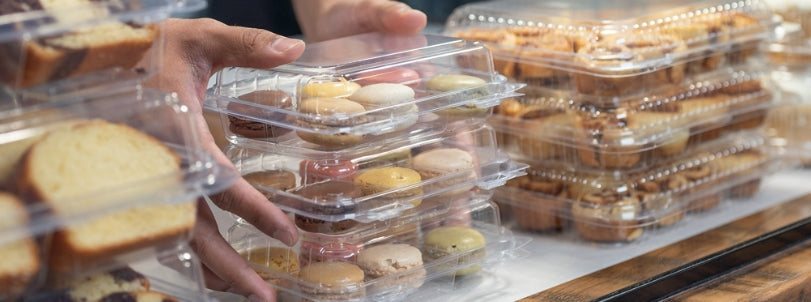
How to Future-Proof Your Packaging Strategy (Without Losing Your Mind)
If it feels like packaging regulations are shifting faster than you can say “compostable clamshell,” you’re not imagining things. From California’s ever-evolving labeling laws to Canada’s growing list of banned single-use plastics, it’s clear: sustainable packaging is under the spotlight. 🔍
So what does that mean for businesses in food and consumer goods? Mainly this: you need packaging that’s smart today and won’t be obsolete tomorrow.
The good news? You don’t need a crystal ball. You just need a packaging strategy that’s flexible, transparent, and built to last. Let’s break it down. 💡
Choose Smarter Materials
The first step? Start with materials that are already hitting the highest sustainability marks. That way, you’re not playing catch-up when new regulations roll in.
Here’s what to look for:
- Certified compostable packaging, like BPI-certified PLA
- Widely recyclable materials such as PET, Bio-PET, or HDPE
- PFAS-free molded fiber and uncoated paperboard
- Bio-based or renewable content to reduce your carbon footprint
And what to steer clear of:
- Black plastics (they’re tough to sort in recycling systems)
- Multi-layer films
- Vague “biodegradable” claims that don’t come with a certification
Follow the Leaders
California. Oregon. New York. A handful of Canadian provinces. These regions are paving the way with packaging rules that often end up becoming the standard elsewhere. Staying tuned into their moves can help you stay ahead of the curve.
A few examples:
- California’s SB 343 tightens the rules on what can be labeled “recyclable.”
- Oregon uses eco-modulated fees based on recyclability.
- New York is advancing Extended Producer Responsibility (EPR) legislation.
💡 Keep these resources on your radar:
- Packaging Dive’s State Policy Tracker
- How2Recycle® and BPI® certification updates
- Local waste websites in your home base and service areas
Work With Transparent, Adaptable Partners
You shouldn’t have to decode regulatory language on your own. A great packaging partner will not only keep you compliant—they’ll help you feel confident doing it.
At good natured®, we’re big believers in making sustainability simple (and beautiful). Check out our Sustainability Guide Book to see how we help businesses like yours make smarter packaging decisions.
What to look for in a packaging partner:
- Materials backed by third-party certifications (ASTM D6400, BPI, How2Recycle)
- Full transparency on sourcing, compostability & recyclability
- Flexibility to pivot as regulations shift
- Support with customer education (because confused customers = contaminated bins)
Build in Flexibility
The best way to stay nimble? Plan for change. Choose packaging that’s modular and designed to evolve with the rules.
Some ideas:
- Test sustainable packaging on select SKUs before scaling
- Use components that can be easily swapped or updated
- Document your material choices and sustainability claims—regulators (and customers) will thank you
Future-proofing is about more than rules—it’s about building trust. When you’re proactive, customers notice. And yes, you should shout about the good you’re doing. 📣
Final Thoughts: Stay Informed, Stay Nimble
Regulations are changing. So are customer expectations. But if you focus on clarity, flexibility, and real-deal sustainability, your packaging will stand the test of time (and the next big regulation).
At good natured®, we’ve got your back. From plant-based packaging to certified compostables and recyclable solutions, we’re here to help you future-proof your strategy—without sacrificing function, feel, or shelf appeal.
Ready to plan for what’s next? Let’s talk. We’ll help you build a packaging strategy that’s ready for anything. 🌍
